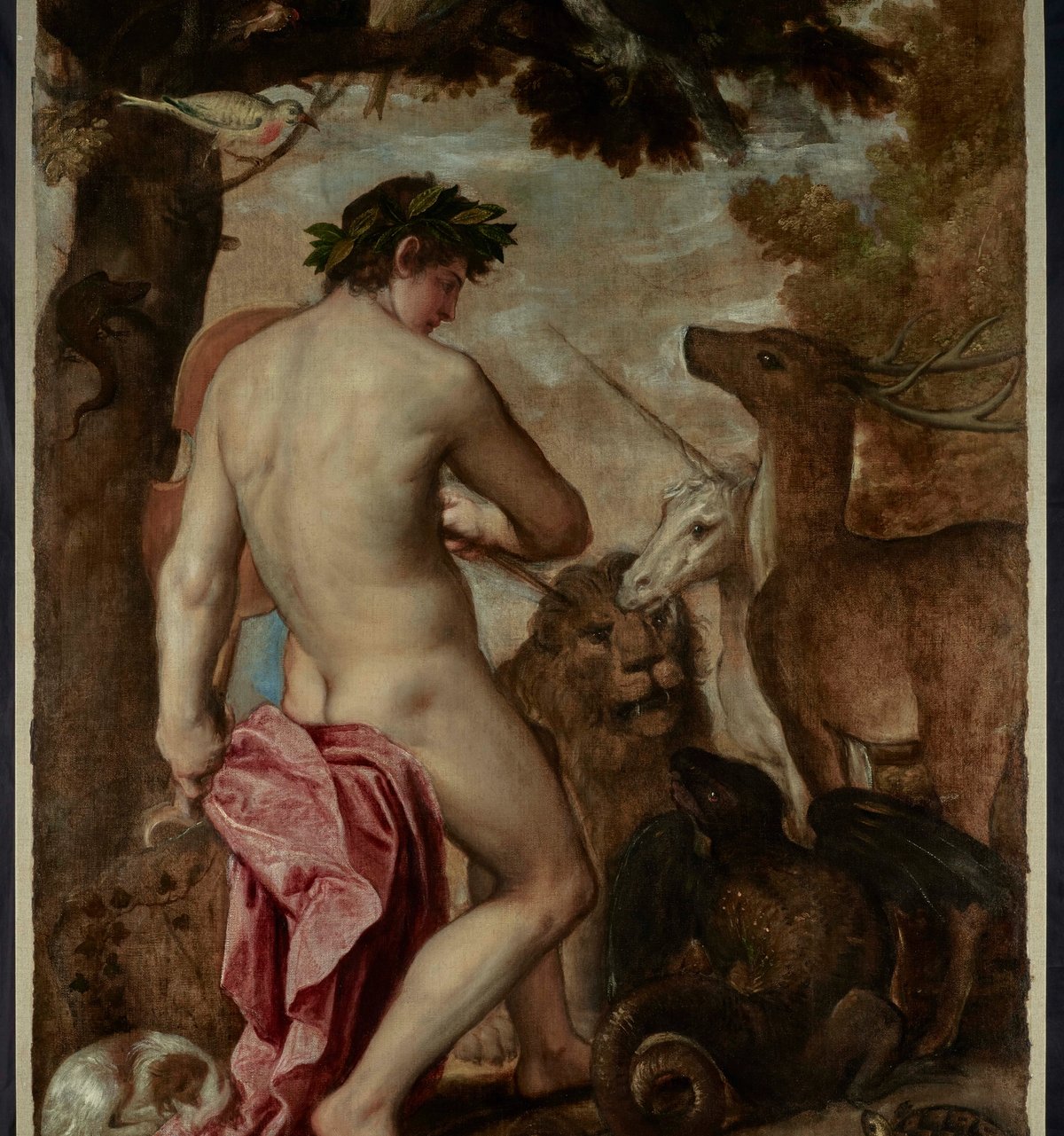A painting in the Duke of Wellington’s collection which was attributed to a minor north Italian artist is being upgraded to Titian’s workshop—or even possibly partly by the master. Since 1901, the 16th-century painting Orpheus Enchanting the Animals has been regarded as the work of Alessandro Varotari (known as Padovanino, since he was born in Padua). The picture was among those which the 1st duke brought to London in 1813 after the battle of Vitoria, in northern Spain.
Orpheus Enchanting the Animals goes back on display today in Apsley House, known as Number 1 London, the duke’s residence at Hyde Park Corner. English Heritage, which opens the mansion to the public, organised a project to reline the canvas and remove disfiguring old varnish.
During the work, a Spanish royal inventory number was discovered on the reverse of the original canvas which links it to a 1601 entry recording the picture as by Titian. At this date Varotari would have been aged 13, so he cannot have been the artist.
Josephine Oxley, the curator of the Wellington collection, studied the newly cleaned work and concluded that the body of Greek hero Orpheus and his red drapery is of high quality. “The picture appears to come from the studio of Titian, and the finer parts may have been done by the master,” she says, dating the work to the 1560s. Alice Tate-Harte, who conserved the painting, agrees, saying that Titian may have been responsible for “some of the underpainting or added finishing touches”.
Three leading Titian specialists were invited to inspect Orpheus Enchanting the Animals in the conservation studio, but all had differing views on the attribution. Now the picture is back on display, hopefully other experts will see the work and reach a consensus. A full report on the painting is due next year in a Titian monograph from the Italian conservation publisher Kermes.


